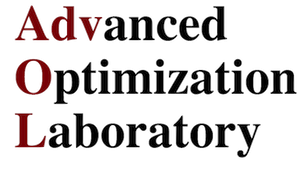| Speaker: | John W. Bandler |
| McMaster University | |
| Bandler Corporation |
Title: Space Mapping: a Sensible Concept for Engineering Optimization Exploiting Surrogates
Engineers have been using optimization techniques for device, component and system modeling and CAD for decades. A significant challenge is optimal design when direct application of traditional optimization approaches is not practical. The recent exploitation of iteratively refined surrogates of "fine," accurate or high-fidelity models, and the implementation of space mapping methodologies are attempts to address this issue. Space mapping optimization intelligently links companion "coarse" (ideal or low-fidelity) and "fine" (practical or high-fidelity) models of different complexities. The simple CAD methodology follows the traditional experience and intuition of engineers, yet appears to be amenable to rigorous mathematical treatment. The exploitation of properly managed "space mapped" surrogates promises significant efficiency in engineering design. The original concept of space mapping, first conceived by Bandler in 1993, and the aggressive space mapping approach to engineering design optimization will be discussed. A trust region aggressive space mapping optimization approach will be indicated. Artificial neural network (ANN) approaches in the form of "neuro space mapping" will be mentioned. An expanded space mapping design framework exploiting preassigned parameters will be discussed. We briefly review the new Implicit Space Mapping (ISM) concept in which we allow preassigned parameters, not used in optimization, to change in some components of the coarse model. Reference is made to a report on recent neuroscientific findings that appear to support the notion that the Space Mapping process is a fundamental means used consciously or subconsciously in daily choices made by humans and to assess social rewards. We have devised novel physical examples to illustrate the idea: Cheese Cutting Problem, Shoe Selection Problem, Wedge Cutting Problem, etc. We present results of RF, wireless and microwave circuit design, integrating electromagnetic simulations. Our approach taken is, however, general and should be of wide interest.
Biography


